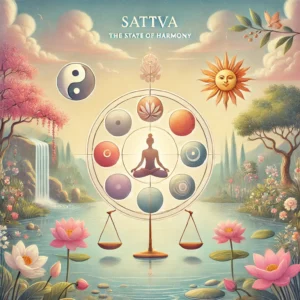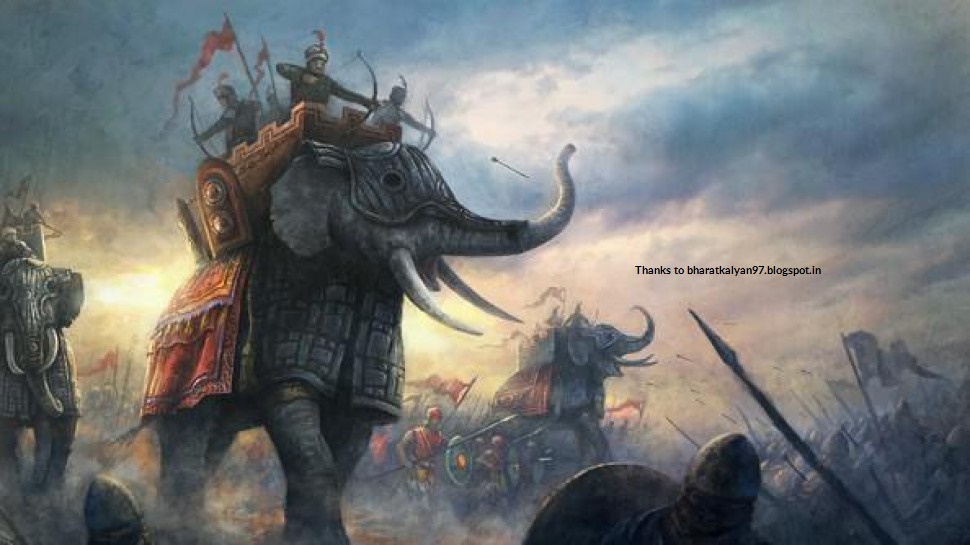What is performance code (ṛtā) of Bhārat.
The performance code of ancient Bhārat was a simple but complete system which conditioned society and the individual into a cohesive lifestyle system called “dharma”. The concept is centered around the hypothesis that excellence occurs when a society and individual perform close to their natural state of conditioning or dharma.
Who is a perfect / supreme person, also known as puruṣottama?
This performance code was called ṛtā and a person who embodied this code was called a perfect or supreme person (puruṣottama). Such a person has reached the state of awareness called sthitaprajña – (sthita = stable, heightened or resolute + prajñā = awareness of the Self or situational awareness).
What are these qualities?
- First, such a person is able to cast off all desires and become completely secure and satisfied in Brahman.
- Second, such a person acts without bias and is not afraid of any outcome. Also, this person is indifferent and without agitation in pain as well as pleasure.
- Third, this person is unattached and without affection everywhere. Additionally, there are no swings in reaction, such as like-dislike, attraction-rejection.
- Fourth, this person is able to withdraw his senses from all objects and keep his or her awareness steady.
Management and the performance code of Bhārat or ṛtā.
Modern management science today is based on west’s perception of society, the individual, the industrial revolution, colonial experience, wars and religion. Consequently, in the ascendant narrative of this western philosophy, the ancient and successful management concept performance code (ṛtā) of Bhārat, which had been practiced for centuries by the ancient Bhārat was lost.
Introduction to the performance code of Bhārat or ṛtā.
During the Trojan wars (around 1000 BC), the hero Achilles refused to fight in the early days on account of wrongdoing by King Agamemnon, saying that he faulted the Law of arête. The ancient Greeks called this their Law of excellence; the definition being that a man or woman of Arête was a person of the highest effectiveness, using all their capabilities to achieve tangible results.
Arête is a cognate of Sanskrit “ṛtā”, a cognate of the Greek word “arête”, Persian word “asa” which, in Avestan means righteousness and the Latin word “ariete” which means battering ram – which breaks down obstacles and ensures effectiveness of purpose.
Obviously, the old world lived by a common, well-defined and codified ideal of performance, which modern civilisation has found unfashionable.
When the Aryans entered Bhārat around 4000 BC, they codified the performance concept or ṛtā. Over the next 2000 years, they honed and integrated the concept into a system and practice which defined their existence or dharma. As a result, ṛtā was woven into the fabric of ancient Bhārat’s society at a societal as well as personal level.
What is the concept of ṛtā?
The basis of ṛtā comes from the assumption that performance is generated only from sacrifice or yajñá.
Yajñá was considered to have three components;
- Truth or satya – the objective of the sacrifice, the focus.
- The sacrifice itself or homā.
- Communication or vāc – that critical component, which kept the sacrifice together and enabled achievement of the objective.
What are the elements of ṛtā?
1- Truth, vision, or objective (satya)
The first component of ṛtā is determining the goal, recognising what needs to be done and why. Next, once a person is able to discriminate between truth and perception, clarity of goal is achieved and effort is maximised to achieve the goal.
Importanly, all projects need a sponsor who determines the need, provides the resources and defines the system. Furthermore, the sponsor is called yajamān (the sponsor of the sacrifice) in ṛtā.
Example: In the case of a football team, the yajamān or sponsor is one who pays the bills and under whose colours the team plays. Additionally, the yajamān decides where league the team shall play. Obviously, if the estimation is incorrect, the team will either lose or not play to its full potential.
2- The sacrifice itself (homā)
Obviously, once the yajamān decides on the activity to be performed, the execution of the sacrifice can start…
- Appointment of a manager (guru): Often, the sponsor or yajamān would not have the capability or capacity to manage the activity directly. The sensible thing to do would be to appoint someone who has the requisite experience and expertise – a guru. A guru can be defined as “the weighty one or anchor” or “he that sheds light on darkness”. Today, such an individual might be called SME (Subject Matter Expert).
Clearly, the quality of outcome would depend on the competence of the guru who would need to know how to manage a project or sacrifice (ṛtā).
Example: Continuing with the above example, once the sponsor or yajamān forms a football team, the key to its success of the team would be the quality and capability of the Team Manager or Coach.
The homa process.
-
Making a commitment (saṅkalpa) – taking the vow.
Firstly, the sponsor (yajamān) and guru need to bring the members together and explain to them, the objectives of the activity (yajñá). Consequently, this will bring the team members into alignment with the goal and enable focus for a successful completion of the activity.
-
Conversion from intent to outcome (āgama)- conversion technique.
Importantly, once the team has been selected and aligned to the goal, the conversion of intent to outcome requires the following inputs;
- Methodology, process or skill-sets or śāstra (process manual) – The coach of any football team should know football rules, strategy, competitive assessment, weather, health and fitness etc. Obviously, all these skill-sets, including specialist skills, training and development should also be resident in the team to make it effective.
- Resources or (dravyam) – No activity can be completed without adequate resources, these are called dravyam (components) – right resource, tools and capital required to perform the sacrifice. For a football team, this is – right players for each position, a practice location, administration facilities, technology support etc.
- The activity itself or (agni), fire or thermodynamic transformation – the moment of truth occurs when the activity is performing and the outcomes become visible. In the case of football, this is the match! The match decides if the integration of all the elements has worked. For instance, whether the sponsor has set the correct goals and provided proper resources as requested by the coach. Similarly, whether the coach has recruited and trained the correct team, estimated the opposition or set the correct strategy. Most importantly, whether the assumptions and hard work lead to victory or achievement of the goals.
- Sharing the prize or prasāda (fruits of the sacrifice) – the successful team shares the fruits of a successful completion of the activity. This could be credits, profits etc. In the case of the football match, this could mean bonuses, advertising contracts etc.
- Thanksgiving or kāyenavacha – The activity is completed by the sponsor bringing the team together and thanking them for supporting the successful completion of the activity.
3- Communication or vac.
Communication is the lifeblood of any activity. Instructions cannot be passed and feedback cannot be received without communication. Clearly, no activity can be successful if there is a breakdown in communication between the team members. This consists of;
- First, there is the communication between the sponsor or yajamān and the officiating manager or guru (the officiator of the sacrifice) on the intent of the sacrifice and periodic appraisal of progress.
- Next, is the communication between the manager or guru and the various participants of the activity. In fact, this includes recruitment, training, performance monitoring and remuneration of team members.
- Lastly, there is the communication between team members.
Importantly, Ṛtā acts at many levels. Firstly, between the yajamān engaged a guru. Next, the guru became the yejaman for the next level and this continued until finally, there was no one left to instruct. This is very similar to today’s organisational structure.
How did ancient Bharat integrate ṛtā into society.
Importantly, the Aryans realised that quality and motivation had to be conditioned into every activity and individual for ensuring performance. Also, these elements had to be made the highest ideals worth aspiring for, the existential lifeblood or dharma of their society.
Accordingly, they gave ṛtā a mythical status and equated it with a role model of impeccable standing – the Sun. Furthermore, ṛtā was equated with the Sun’s rays or uṣas to make it the part of their existence dharma (existential conditioning).
Ṛtā was also integrated with the Sun
Ṛtā is derived from the syllable “hr” which means dynamism, vibrancy, seasoning and ownership. Additionally, the derived noun “hrtam” means order, rule or divine law. So, to make ṛtā an unassailable concept, the aryas equated it with divinity.
-
The deity – deva is Savitā
Importantly, Savitā is the life-giving attributes of the Sun, its excellence – light, heat etc. Consequently, this made it so central to life, that alignment of all activities to this deity ensured that ṛtā was considered sacred and performed with adequate quality and attention to detail.
-
The prayer – sandhyāvandana
Sandhyāvandana meaning veneration of twilight (daybreak, noon – when the sun crossed overhead and dusk).
-
The mantra or meter – gāyatrī-mantra.
The gāyatrī-mantra is a eulogy to the Sun. The meter requires focus to be chanted correctly. This ensures filtering out of extraneous sounds and increases concentration, ability to handle stress and enhances situational awareness. For this reason, the gāyatrī-mantra is embedded into the sandhyāvandana, so when sandhyāvandana is practiced every day, the person’s ṛtā automatically increases.
-
The exercise – sūryanamaskāra (Sun-salutation).
This is an all-round exercise which ensures overall physical fitness and agility of the practitioner.
Conclusion:
In conclusion, by codifying ṛtā, the ancient Indians institutionalised and integrated purpose, quality and commitment to every activity. Even today, 6000 years on, the principle of ṛtā is still the foundation of all human activity, reinforcing the sagacity of the ancient ancestors of India.
School of Yoga thanks Pijus Kanti Pal and Dolon Chanpa Mondal for their contribution, given below,
The root word or dhātu of ṛtā is ऋत. When ऋत is used as the adjective of a noun, in that case, it takes the gender of that particular noun.
नोक्तपूर्वं मया क्षुद्रमश्लीलं वा कदाचन ।
ऋता ब्रह्मसुता सा मे सत्या देवी सरस्वती ॥१०॥ महाभारतम्-12-शांतिपर्व-352
जयस्तु सुश्रुताज्जज्ञे जयात्तु विजयोऽभवत् ।
विजयस्य ऋतः पुत्रः ऋतस्य सुनयः सुतः ॥ ५८ ॥ गरुडपुराणम्/आचारकाण्डः/अध्यायः १३८
यथा, शतपथब्राह्मणे । “ब्रह्म वा ऋतं ब्रह्म हि मित्रो ब्रह्म ऋतं ब्रह्म एवायुः” ॥ परब्रह्म । यथा, श्रुतिः । “ऋतमेकाक्षरं ब्रह्म” ॥ सत्याचारः । यथा, ऋग्वेदे । १ । १३७ । २ ।
Firstly, when we want to use ऋत as a noun for a particular concept of excellence or right or truth, in that case, that is neuter gender. Furthrmore, in Sanskrit, ऋतम् and in English, only the root word ऋत are used. In addition, some texts refer ऋतः as the Sun. So, in that case, it is noun and the root word is ऋत (ṛta and not ṛtā).
Encyclopedia (Śabdakalpadrumaḥ)
Derivation and some relevant connotations of the word ऋत from the Encyclopedia Śabdakalpadrumaḥ
Derivation – ऋ (धातु/verb) + क्त (प्रत्यय/suffix) = ऋत
- उञ्छशिलम्।
यथा–
“ऋतामृताभ्यां जीवेत्तु मृतेन प्रमृतेन वा ।
सत्यानृताभ्यामपि वा न श्ववृत्त्या कदाचन ॥
ऋतमुञ्छशिलं ज्ञेयममृतं स्यादयाचितम् ।
मृतन्तु याचितं भैक्षं प्रमृतं कर्षणं स्मृतम्” ॥ मनुः । ४ । ४ — ५ ॥
- जलम्।
यथा–
“तन्म ऋतं पातु शतशारदाय” । ऋग्वेदे । ७ । १०१ । ६ ।
“ऋतमुदकम्” । इति भाष्यम् ॥
- सत्यं।
यथा–
“साक्ष्येऽनृतं वदन् पाशैर्बध्यते वारुणैर्भृशम् ।
“विवशः शतमाजातीस्तस्मात् साक्ष्यं वदेदृतम्” ॥ मनुः । ८ । ८२ ।
- कर्म्मफलं।
यथा–
“ऋतं पिवन्तौ सुकृतस्य लोके” । इति श्रुतिः ॥
- पुं सूर्य्यः ।
यथा–
“त्वेति सादयति स यदाहऽर्तायुभ्यां त्वेति ब्रह्म वा ऋतं ब्रह्म हि मित्रो ब्रह्मो ह्यृतं वरुण एवायुः संवत्सरो हि वरुणः संवत्सर आयुस्तस्मादाहैष ते योनिर्ऋतायुभ्यां त्वेति -” ॥ शतपथब्राह्मणे ४.१.४.१०
- परब्रह्म।
यथा– श्रुतिः । “ऋतमेकाक्षरं ब्रह्म” ॥
- सत्याचारः।
यथा–
“सुतो मित्राय वरुणाय पीतये चारूरृताय पीतये” ॥ ऋग्वेदे । १ । १३७ । २ ।
“ऋताय सत्याचाराय” । इति दयानन्दभाष्यम् ॥
- यज्ञः।
यथा–
“ऋतचिद्धि सत्यम्” । ऋग्वेदे । १ । १४५ । ५ ।
Dictionary from Vaman Apte, some meanings,
ऋत r̥ta a. [ऋ-क्त]
- Proper, right.
- Honest, true; सर्वमेतदृतं मन्ये यन्मां वदसि केशव Bg.10.14; Ms.8.82.
- Worshipped, respected.
- Bright, luminous (दीप्त)
- Gone, risen, moved, affected by; सुखेन ऋतः = सुखार्तः ऋते च तृतीयासमासे Vārt. on P.VI.1.89; so दुःखः˚, काम˚. -तम् ind. Rightly, properly. -तः
- A sacrifice.
- The sun (n. also). -तम् (Not usually found in classical literature)
- A fixed or settled rule, law (religious).
- Sacred custom, pious action. यस्तनोति सतां सेतुमृतेनामृतयोनिना Mb.12.47.49.
- Divine law, divine truth.
- Absolution. मर्त्यानामृतमिच्छताम् Bhāg.1.16.7.
- Water; सत्यं त्वा ऋतेन परिषिञ्चामि.
- Truth (in general), right; ऋतं वदिष्यामि T. Up.1.1.1. ऋतानृते Ms.1.29, 2.52,8.61,104.
- Truth (personified as an object of worship; in later Sanskrit regarded as a child of Dharma).
- Livelihood by picking or gleaning grains in a field (as opposed to the cultivation of ground); ऋतमुञ्च्छशिलं वृत्तम् Ms.4.4.
- The fruit of an action; एकं चक्रं वर्तते द्वादशारं षण्णाभिमेकाक्षमृतस्य धारणम् Mb.1.3.62.
- Agreeable speech; ऋतं च सूनृता वाणी कविभिः परिकीर्तिता Bhāg.11.19.38.
- N. of an Āditya.
- The Supreme Spirit. (In the Vedas ऋत is usually interpreted by Sāyaṇa to mean ‘water’, ‘sun’ or ‘sacrifice’, where European scholars take it in the sense of ‘divine truth’, ‘faith’ &c.). -Comp. -जा, -जात a. Ved.
- of a true nature, sprung from sacred truth; अब्जा गोजा ऋतजा अद्रिजा ऋतम् Rv.4.40.5.
- Well-made, excellent; Rv.3.58.8.
- Also, person who embodied this code was called a perfect or supreme person (puruṣottama).


